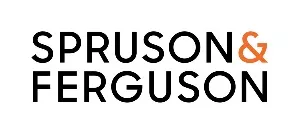- within Privacy and Corporate/Commercial Law topic(s)
- with Senior Company Executives, HR and Finance and Tax Executives
- with readers working within the Banking & Credit, Healthcare and Law Firm industries
Key takeaways
- The Australian regulatory framework for medical devices provides useful, practical guidance for patenting inventions involving Artificial Intelligence (AI) within the medical technology (medtech) space.
- Whilst there is no statutory exclusion to patentability for inventions involving AI-powered medical devices in Australia, innovators seeking patent protection in this field should articulate a sufficient level of transparency and technical detail to improve likelihood of patent eligibility.
As AI permeates through all areas of healthcare, its integration into medical devices facilitates profound opportunities for breakthrough innovations in this field.
A carefully considered approach to patenting AI-powered medical devices can promote value creation and leverage in a rapidly evolving and competitive medtech industry, in turn incentivising innovation and multidisciplinary collaboration.
What is an AI-powered medical device?
Australia's regulatory authority for therapeutic goods, the Therapeutic Goods Administration (TGA), regulates AI as a medical device if it is intended to be used for human beings to achieve a therapeutic or diagnostic purpose.1 Some examples of AI-powered medical devices which would seemingly qualify under the legislated definition include:
- wearable health devices integrating predictive analytics for pre-emptive medical event detection
- AI-powered image recognition tools to analyse medical imaging for identification of abnormalities and disease presence
- robotic surgical systems enhanced with AI for improved surgical precision, efficiency and automation
- neuroprosthetics and brain machine interfaces for the treatment of neurological disorders.
The above list is non-exhaustive, and it is likely that the definition of what constitutes a medical device will be clarified as the legal framework adapts to this revolutionary technology.
Regulatory hurdle
Before a medical device can be legally supplied in Australia, manufacturers (inclusive of software developers) must demonstrate compliance with legislated regulatory requirements, deemed "Essential Principles" 2.
For a programmed or programmable medical device, or software that is a medical device, the Essential Principles govern evidence and clinical evaluation requirements commensurate with the risk profile of the medical device to demonstrate fundamental safety, reliability and performance of the product.3 In respect of AI-powered medical devices, this would necessitate clear, objective and robust documentation of at least:4
- the way AI is implemented for the purpose of achieving the intended objective of the medical device
- AI/machine learning algorithms and model architecture including explanation of model inputs and outputs
- data used for training and testing including justification of credibility and suitability of the data and how the data promotes generalisability
- risk management relating to, for example, overfitting, bias and data drift, and
- a postmarket management plan to proactively ensure ongoing performance and safety of the medical device.
The Essential Principles also require adherence with respect to maintaining privacy of the data and cybersecurity of the medical device.5
It follows that a 'Black Box' AI medical device system would generally not qualify for regulatory approval.6
Patentability considerations
Drawing similarities with the regulatory requirements, transparency and technical detail are of key importance when considering patent eligibility of inventions involving AI in this field.
Whilst patentability is assessed on a case-by-case basis, it is best practice to demonstrate that the substance of an invention for an AI-powered medical device:7
- exhibits technical character
- produces a practical and useful result when applied
- requires more than generic computer implementation.
That is, the contribution over the state of the art attributable to the AI component must be technical in nature, such as providing a technical solution to a technical problem or a practical and useful real-world effect rather than mere use of computer technology.8
Taking the above into consideration, the disclosure requirements for regulatory approval of AI-powered medical devices are pertinent to demonstrate patentability of associated inventions. This would involve:
- Detailing specifics of the AI algorithm(s), model architecture, training methodologies and performance metrics as opposed to vague or generic descriptions.
- Emphasising how the AI component integrates with and contributes to the technical function and performance of the medical device to give rise to a technical improvement with real-world utility, rather than as a standalone algorithm yielding an intangible effect.
Establishing this level of technical detail is crucial to differentiate the invention from relating to a mere scheme, plan or discovery, or mere abstract ideas or information which case law has held is not patentable subject matter.9 Such detail also contributes to fulfilling legislated disclosure requirements relating to sufficiency, support and best method.10
In relation to privacy, our earlier article has explored the handling of patient data in the training of AI and the need for de-identification or compliance with privacy obligations and policies before inclusion in a patent application.
Although regulatory and patenting timelines may not always align, the similarities in the level of disclosure required to obtain regulatory approval and secure patent rights for AI-powered medical device innovations promotes a harmony between these processes to facilitate a favourable outcome for the innovator.
Opportunities ahead
As technology involving AI-powered medical devices continues to surge in complexity and reach, there is incentive to move towards a globally aligned regulatory framework via collaboration between regulatory authorities worldwide.11
This could serve as a backdrop or inducement for change in the patent landscape around this technological area which is presently unsettled and nuanced. It is nonetheless crucial for innovators seeking patent protection in this field to provide sufficient transparency and technical detail to tip the balance in favour of patent eligibility.
Our attorney and legal teams are recognised experts in the medical devices, therapeutics, pharmaceutical and life sciences sectors. If your innovations utilise AI, we highly advise engaging with intellectual property experts, and we would be happy to assist. Reach out to the authors or your Spruson & Ferguson contact to find out more.
Footnotes
1 Therapeutic Goods Act 1989 (Cth) s
41BD(1)(a).
2 Therapeutic Goods (Medical Devices) Regulations
2002 (Cth) sch 1.
3 Ibid cl 12.1.
4 Australian Government, Department of Health,
Disability and Ageing, Therapeutic Goods Administration,
Artificial Intelligence (AI) and medical device software
(Canberra: Commonwealth of Australia, 2024) (Evidence requirements for software using AI |
Artificial Intelligence (AI) and medical device software |
Therapeutic Goods Administration (TGA)) [29 May 2025].
5 Therapeutic Goods (Medical Devices) Regulations
2002 (Cth) sch 1 cl 12.1.
6 Therapeutic Goods Administration, Artificial
Intelligence (AI) and medical device software.
7 Aristocrat Technologies Australia Pty Limited
[2016] APO 49 at [35].
8 Commissioner of Patents v Aristocrat Technologies
Australia Pty Ltd (2021) 286 FCR 572 at 601
[118]‑[119].
9 Aristocrat Technologies Australia Pty Ltd v
Commissioner of Patents [2022] HCA 29 at [22].
10 Patents Act 1990 (Cth) ss 40(2)-(3).
11 Australian Government, Department of Health,
Disability and Ageing, Therapeutic Goods Administration, TGA
international engagement strategy 2021-2025 (Canberra:
Commonwealth of Australia, 2021) (TGA international engagement strategy 2021-2025 |
Therapeutic Goods Administration (TGA)) [29 May
2025].
The content of this article is intended to provide a general guide to the subject matter. Specialist advice should be sought about your specific circumstances.



